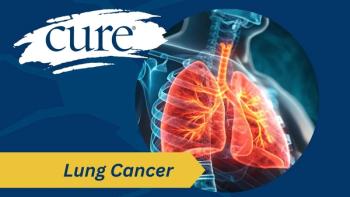High tumor infiltrating lymphocytes (TILs) in patients with early HER2-positive breast cancer and whose dose of chemotherapy is reduced in addition to a shorter Herceptin (trastuzumab) duration may not have an excess risk for disease relapse or death compared with those with low TILs, according to findings from the 10-year updated analysis of the ShortHER study.
TILs refer to white blood cells that migrate into a tumor and play a role in the immune system’s response to cancer. The presence of these cells may indicate the strength of a patient’s immune response to the cancer, with a higher density of TILs potentially associated with a better prognosis.
Findings from this analysis were presented at the 2024 ESMO Congress.
Study Highlights:
- High tumor-infiltrating lymphocytes (TILs) were significantly associated with improved overall survival and distant disease-free survival in patients with early HER2-positive breast cancer.
- The benefit of longer versus shorter Herceptin duration may depend on the level of TILs in the tumor.
- Patients with high TILs had consistently better outcomes, regardless of treatment arm.
- TILs could be used as a biomarker to help guide treatment decisions for patients with early HER2-positive breast cancer.
“This is the first demonstration of an independent prognostic role of TILs in terms of overall survival (the time when a patient with cancer is still alive) for patients with early HER2 positive breast cancer treated with adjuvant chemotherapy and anti-HER2 treatment,” Dr. Maria Vittoria Dieci, associate professor at the University of Padua in Italy, said during the presentation. “…This data further support the inclusion of immune-related biomarkers into prognostic tools for early HER2-positive breast cancer patients.”
During a median follow-up of 9.02 years, TILs were significantly associated with survival. In particular, for each 1% increase in TILs, there was a 3% reduction in the risk for a distant disease-free survival event and a 2% reduction in the risk for death, both of which were highly statistically significant, Dieci noted.
Researchers also assessed distant disease-free survival (how long a patient lives without the cancer spreading to other parts of the body) by TIL counts. Patients with high TIL counts had a significantly better outcome vs those with low TILs. The HR for distant disease-free survival was 0.49 for the 20% cutoff, 0.37 for the 30% cutoff and 0.21 for the 50% cutoff. In other words, the risk for distant disease-free survival decreased as TIL counts increased.
“The 10-year distant disease-free survival rate was almost 90% at a 20% cutoff, almost 92% at a 30% cutoff, and almost 97% at a 50% cutoff,” Dieci said.
Similar results were observed for overall survival, with patients with high TILs having consistently better outcomes versus those with lower TILs. HRs for overall survival were 0.57 for the 20% cutoff, 0.38 for the 30% cutoff and 0.16 for the 50% cutoff. The 10-year overall survival rate for patients with high TILs was above 91% at the 20% cutoff, above 93% at the 30% cutoff and above 98% at the 50% cutoff.
With this longer-follow-up, there was a significant interaction between TILs and treatment arm for distant disease-free survival.
“For patients with low TILs, there was an evident benefit when they were treated in the long [duration] arm as compared to the short [duration] arm, whereas there was a numerically improved outcome in the for high TILs patients when they were treated in the short arm as compared to the long arm.”
The HR for the interaction between TILs and treatment arm was 1.78 for TILs lower than 20% and 0.38 for TILs of 20% and higher.
Findings were similar when assessing the interaction between TILs and treatment arm for overall survival.
“A numerically better outcome for patients with low TILs treated in the long [duration] as compared to the short [duration] arm, and a numerically better outcome for patients with high TILs treated in the short [duration] as compared to the long [duration] arm,” Dieci said.
The HR for this interaction for overall survival was 1.36 for TILs lower than 20% and 0.36 for TILs of 20% and higher.
Background of the ShortHER Trial
There is an ongoing need for prognostic biomarkers to guide treatment de-escalation in patients with early HER2-positive breast cancer, Dieci said. She and her colleagues used data from the ShortHER adjuvant trial that tested the de-escalation of a chemotherapy dose and Herceptin duration in this patient population.
In particular, the ShortHER trial tested nine weeks versus one year of adjuvant Herceptin plus chemotherapy in patients with early HER2-positive breast cancer to see if one was inferior to the other. In previously published data, Diece noted that the 10-year overall survival analysis showed “superimposable outcomes” for both treatment arms.
The biomarker of interest in the ShortHER trial is TILs, which was assessed in a sample of 866 patients. At a median follow-up of six years, patients with high TILs, defined at a 20% cutoff, had significantly improved distant disease-free survival versus patients with low TILs. In addition, researchers also found a significant interaction between TILs and the treatment arm.
“Specifically, for patients with low TILs, there was a significant benefit when treated in the long [duration] as compared to the short [duration] arm, whereas patients with high TILs experienced a very good distant disease-free survival, irrespectively of treatment arm, with even a numerically better outcome for patients treated in the short arm,” Dieci explained.
Survival endpoints for this study were distant disease-free survival (107 events) and overall survival (74 events). The objective of this study was to assess the prognostic association of TILs with these survival endpoints, in addition to the interaction between TILs and treatment arm.
For more news on cancer updates, research and education, don’t forget to subscribe to CURE®’s newsletters here.





